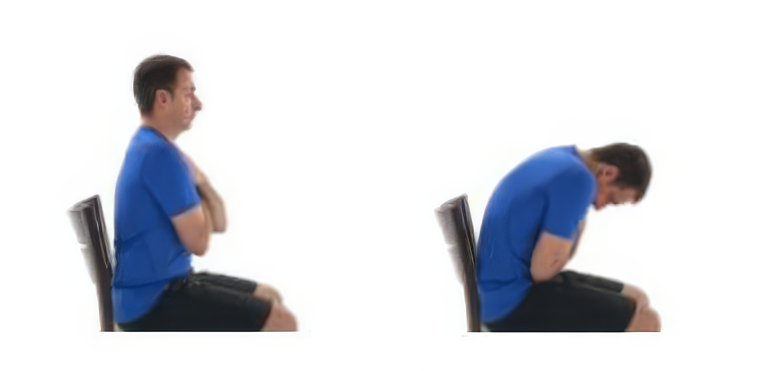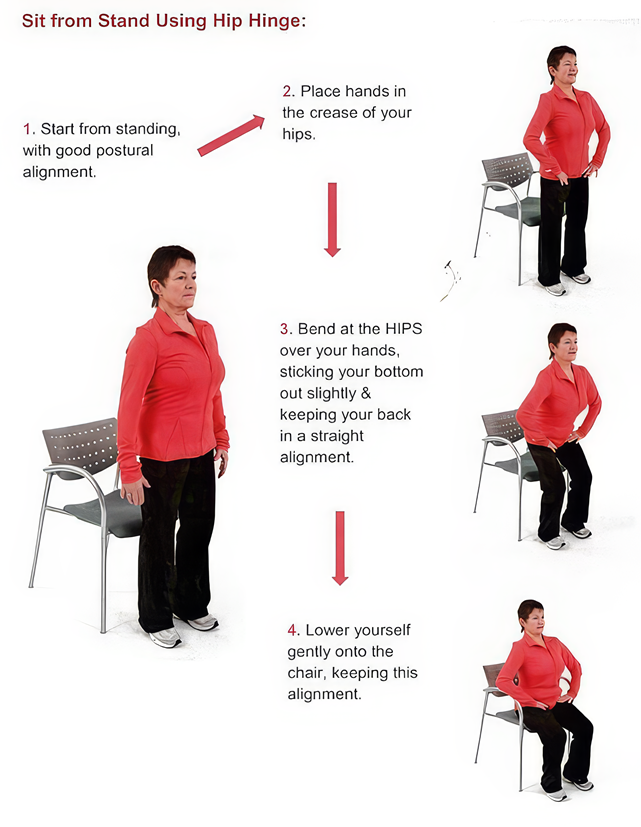The basics
An important part of managing osteoporosis is learning to protect your back from strains and prevent factures.
Back pain
Back pain is often caused by months or years of:
- poor posture
- faulty body position during activities
- stressful living or working habits
- loss of flexibility
- decreased physical fitness (low activity combined with spending much of the day sitting, bending or reaching contributes to poor posture and back pain)
Back care principles
Activities that involve flexion or bending put more pressure of the front of the vertebra and may increase your risk of a fracture. Other movements such as repetitive actions, or forced or rapid motions, may also injure your back.
Apply these principles throughout the day to protect your back.
- keep your spine balanced and in a neutral position
- make sure your work surface (ie. desk) is the right height for you so you can maintain proper posture while you work
- use spinal sparing and hip hinging (shown below)
- avoid movements that are stressful on your back
- make sure your back has proper support when you are sitting
- adjust your tools and environment
- exercise regularly
Movements to limit, reduce and avoid
It is important to avoid compressing your spine during activities and while sitting and standing. You should also be careful when lowering heavy object from overhead.
Limit
- repeated, sustained, weighted, end-range, rapid or forceful movements
- flexion, rotation and side bending
Reduce
- flexed, slouched or rotated postures during everyday activities and work
Avoid
- prolonged bending and habitual bending postures
- excessive bending of the back during exercise or activities
- dynamic abdominal sit-ups
- sitting in a C-shaped posture or doing crunches


Photos by Wibbi
Spinal sparing with hip hinge
It is important to learn how to safely align your spine during activities and postures throughout our day.
Always use your legs instead of your back to do work. Use a hip hinge by bending at your hips (not the back) to take stress off your spine.
- While standing, place your hands (palm up) against your hip creases.
- Keeping your back straight, lean forward by hinging forward at the hips, over your hands.
- Make sure your back stays straight.
Use this action to move from sitting to standing, and when doing daily activities that require you to bend (such as reaching, lifting, vacuuming and raking).

Photo by Bonefit